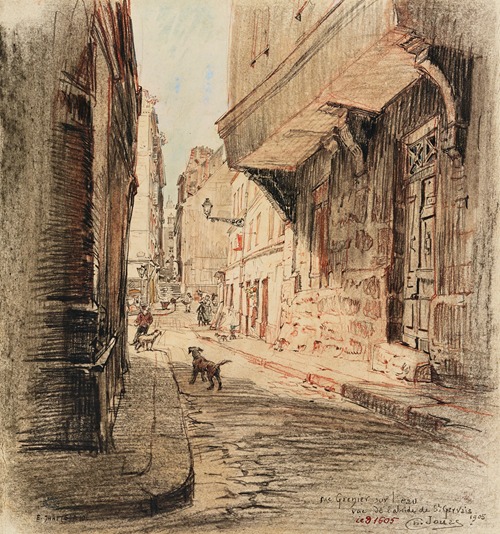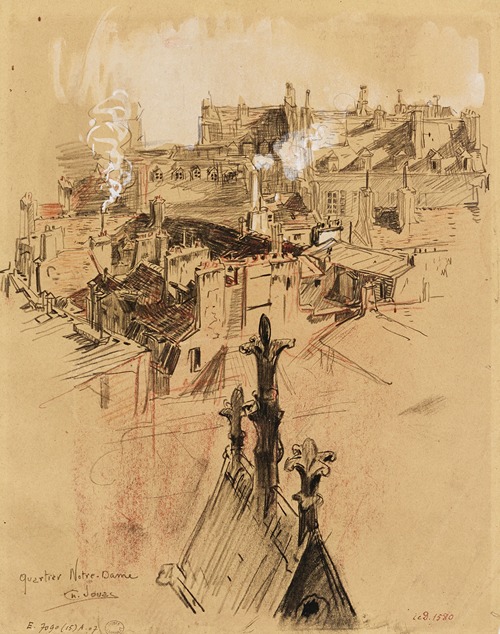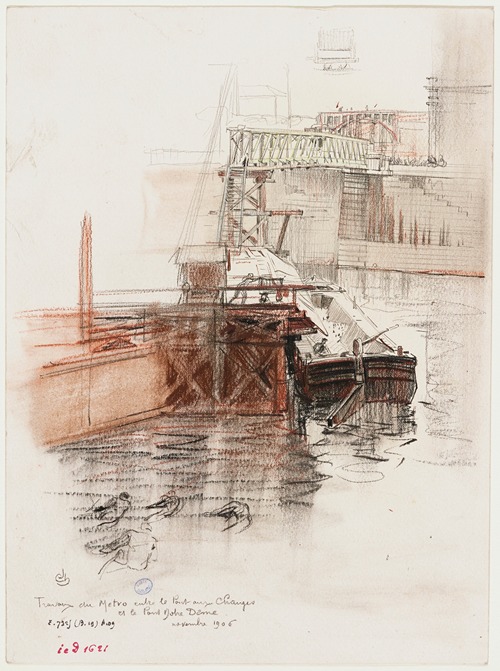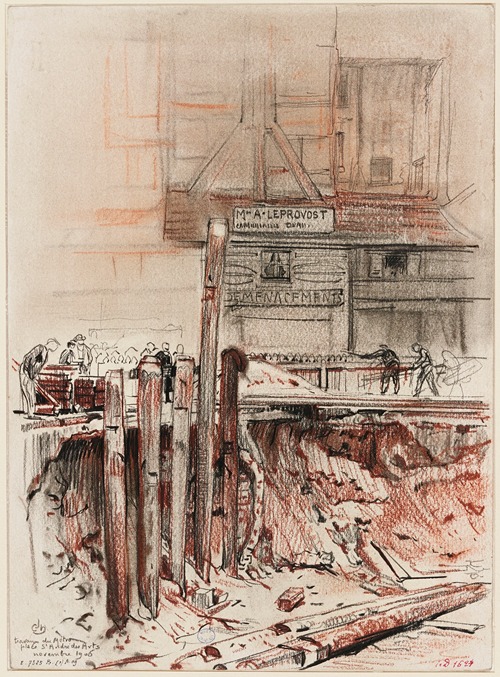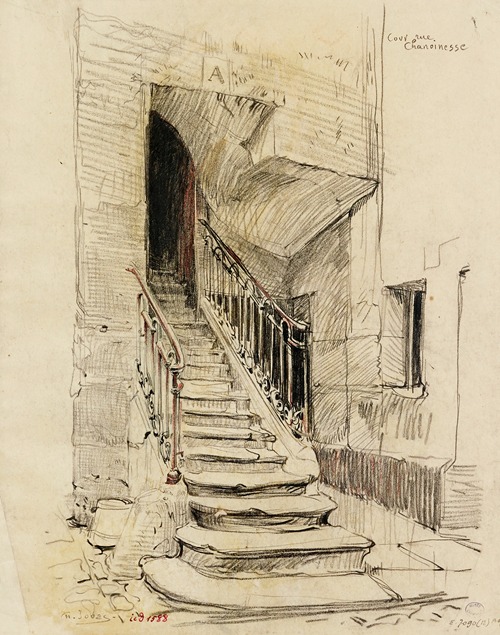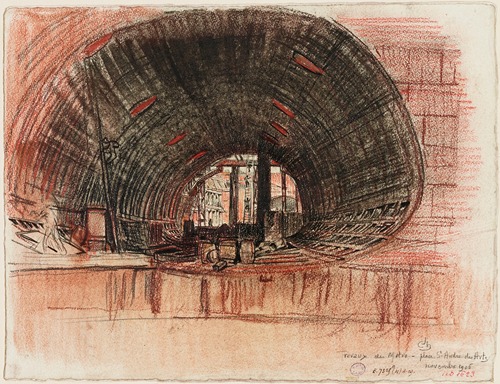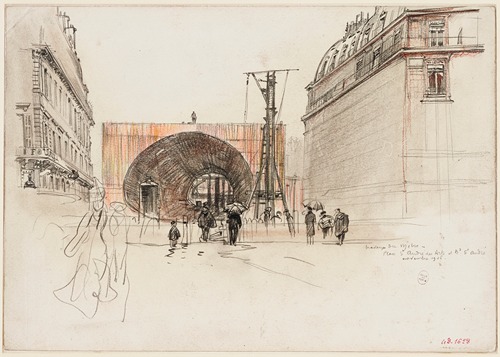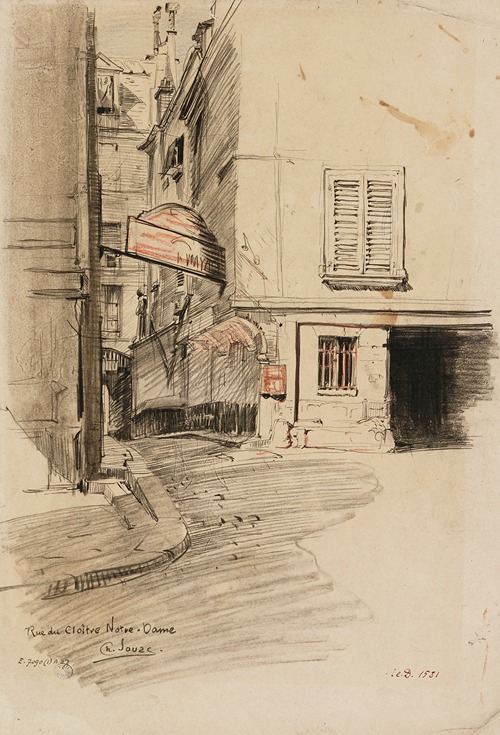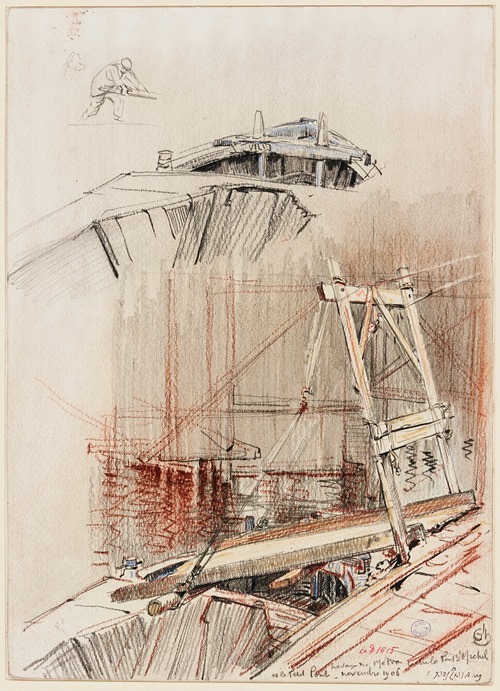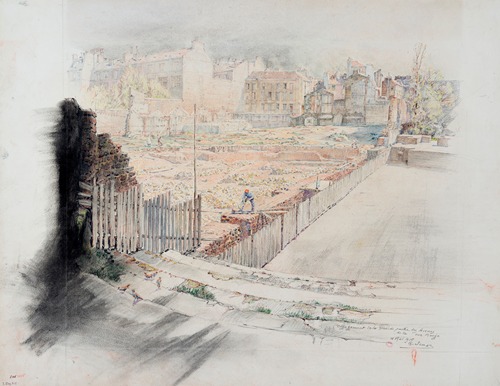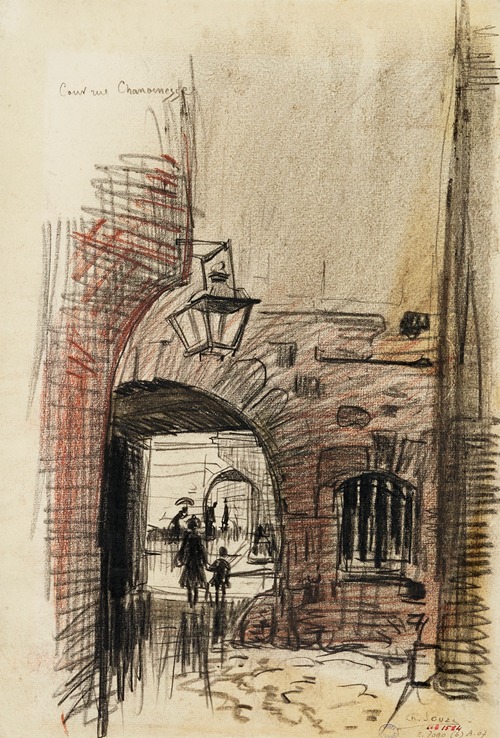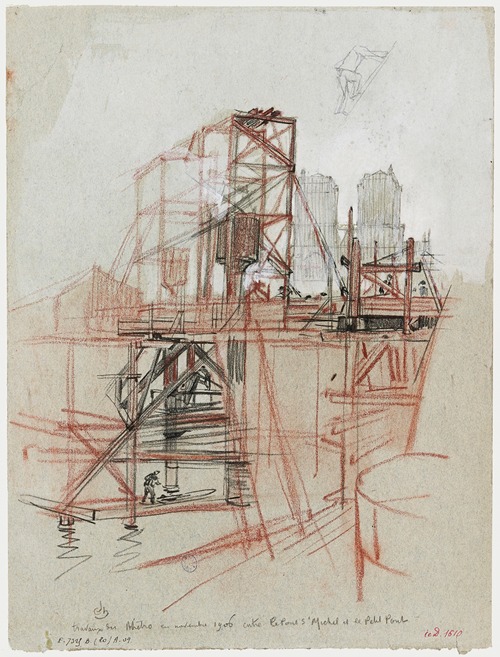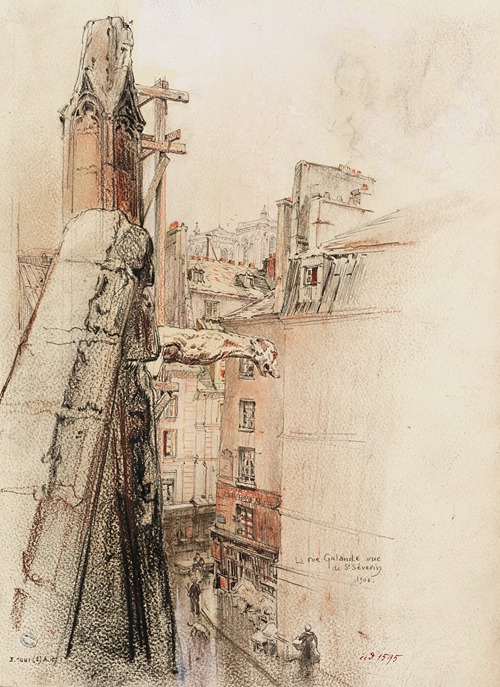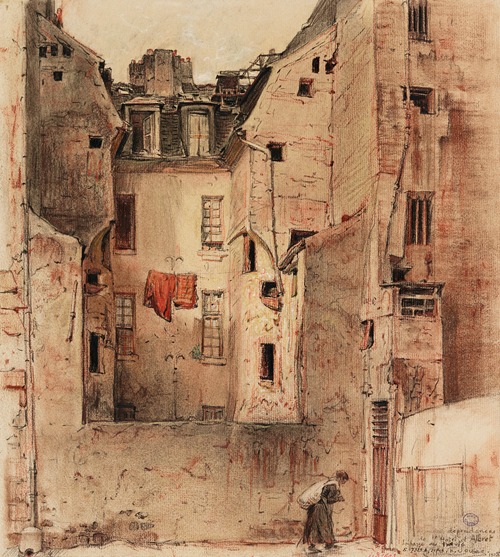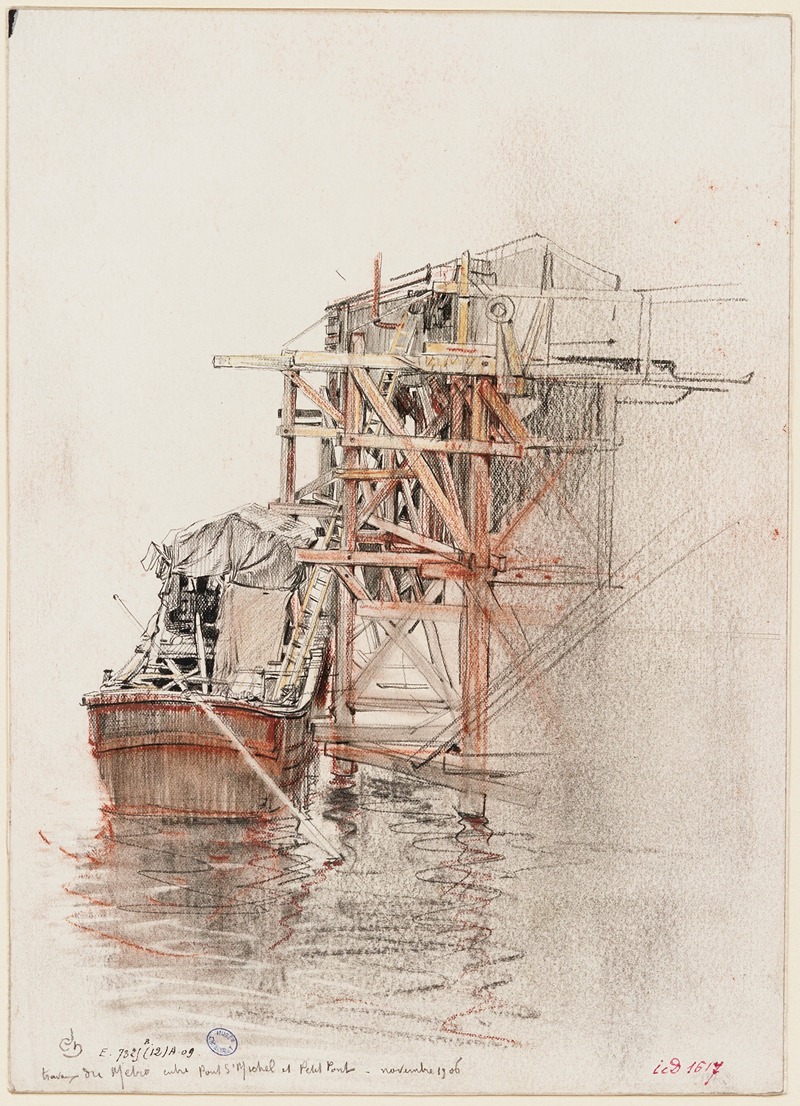
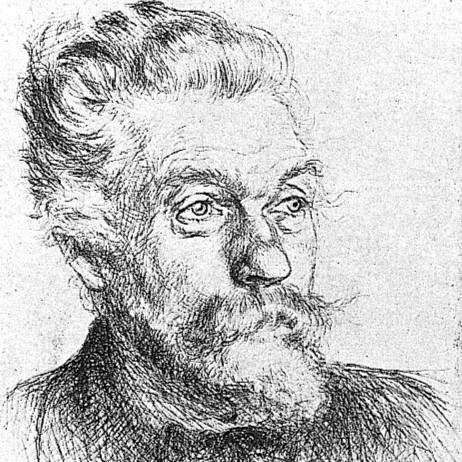
Charles Jouas was a French designer, painter and illustrator.
Born in the Faubourg Saint-Antoine in Paris, Charles Jouas was drawn to drawing from a very early age. His father having died young, he decided his future direction for himself. He trained on his own, working “on the job”, then attended several workshops, including that of Georges Clairin, a pupil of Isidore Pils, and of Henri Regnault, where he was introduced to painting. He worked on opera sets with Auguste Rubé and Chaperon. He helped decorate the theater in Tours. He quickly realized that superficial virtuosity, “tinsel”, could be an obstacle to progress towards quality. He turned increasingly to drawing, seeking ever more rigor. From the 1890s, he became friends with the symbolist painter Louise Desbordes (or Louise-Alexandra Desbordes-Jouas), whom he married in 1906. From 1894, they had a studio at 3 bis Cour de Rohan in the 6th arrondissement of Paris.
He had just completed a sketchbook of watercolors intended to illustrate Le Maroc by Pierre Loti, in 1896, when the crucial encounter of his life occurred: he introduced himself to Henri Beraldi, a great bibliophile and publisher. Beraldi immediately saw the young man's talent and the advantage he could gain from it. He first commissioned him to produce a series of drawings of Paris, then the illustrations for Poèmes parisiens by Émile Goudeau.
A long collaboration began between them, with the engraver Henri Paillard engraving Jouas's drawings. In 1897, they met in the Pyrenees, in Luchon, Beraldi's summer resort. They set off on long hikes, from which Jouas brought back numerous drawings. Jouas showed a certain originality in the choice of his views, avoiding the clichés common in lithography and prints, and instead presenting previously unseen sites. The big project was to illustrate the bibliophile's monumental chronicle, Cent ans aux Pyrénées (One Hundred Years in the Pyrenees). The material will be there, numerous illustrations which are obviously intended for publication, most of them engraved by Paillard. But the work appears without the illustrations, with the exception of the vignettes that adorn the covers of the seven volumes: the portraits of Ramond, Lézat, Russell, Nansouty, Schrader, Chausenque, Peytier and Hossard.
He also illustrated bibliophile works, including Joris-Karl Huysmans' La Cathédrale, Henri de Régnier's La Cité des Eaux and Daniel Halévy's Vauban. He took up engraving and became president of the Engraving section of the Société nationale des beaux-arts. Between 1915 and 1920, he exhibited at the Chaine et Simonson gallery on rue Caumartin.
A large number of Charles Jouas' works are kept at the Pyrenean Museum in Lourdes: the Charles Jouas collection includes 127 drawings and watercolors, as the artist had maintained relations and corresponded with the founder and first curator of the museum, Louis Le Bondidier. The Carnavalet Museum in Paris, for its part, has on display views of Paris from 1905 and 1906, including views of the metro construction sites.
